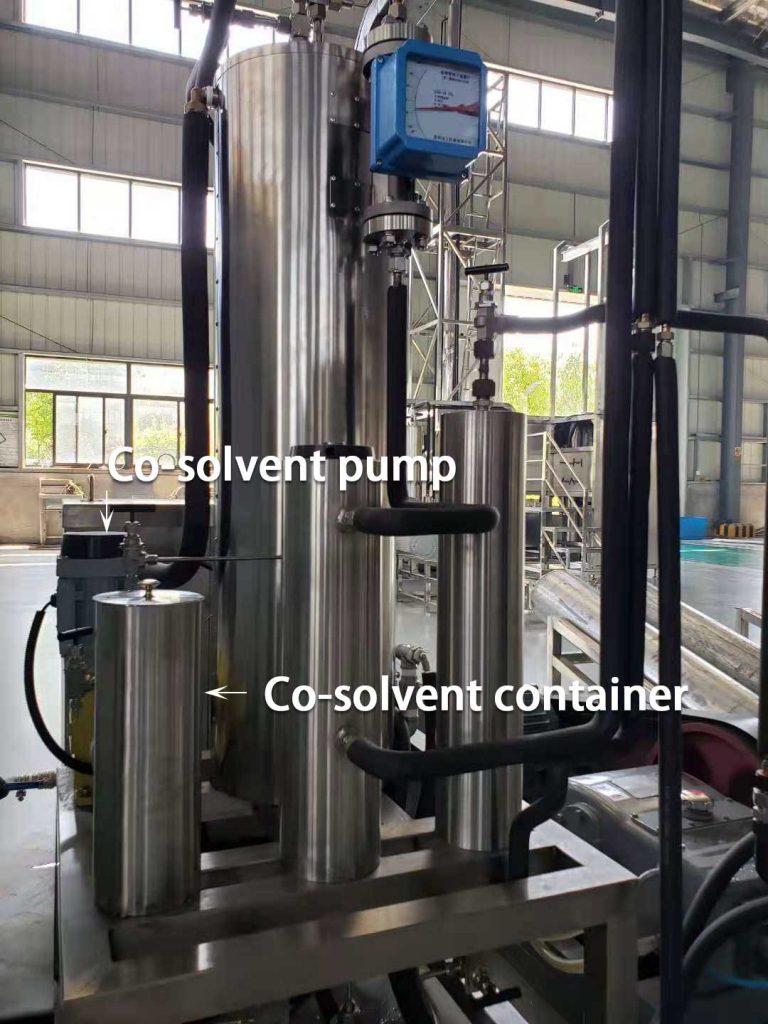Supercritical CO2 extraction is a widely employed technique in various industries for extracting valuable compounds from different materials. To ensure the optimal performance and longevity of the extraction equipment, it is crucial to implement a comprehensive cleaning process. This article provides an in-depth overview of the cleaning procedure for supercritical CO2 extraction equipment, emphasizing the cleaning steps, selection of appropriate solvents, and the importance of thorough equipment drying.
Cleaning Process

The cleaning process for supercritical CO2 extraction equipment involves internal circulation to clean the pipelines and extraction vessels thoroughly. Prior to initiating the circulation, it is essential to introduce an appropriate cleaning agent into the solvent system. The recommended cleaning agent consists of a mixture of supercritical CO2 and anhydrous ethanol in a volumetric ratio ranging from 100:2 to 100:6. This combination facilitates effective removal of solid pigments and lipophilic substances that adhere to the equipment’s surfaces.
The liquid CO2, stored in a tank, is pressurized above the critical pressure using a high-pressure pump. The CO2 then undergoes heating in a heat exchanger to surpass the critical temperature, entering the supercritical state. In this state, the CO2 acts as the carrier for the cleaning fluid, enabling the dissolution and removal of residual contaminants.
To achieve optimal cleaning results, the process is carried out under controlled conditions of temperature (70-80°C) and pressure (15-18 MPa). The cleaning agent, comprising supercritical CO2 and anhydrous ethanol, is circulated through the CO2 extraction vessel, CO2 separation vessel, circulation pump, mixer, filter, and associated pipelines. The recommended cleaning time falls within the range of 10-20 minutes. It is important to strike a balance between cleaning efficiency and cost-effectiveness, considering that extended contact time increases energy consumption and labor costs without substantial improvement in cleaning efficacy.
Separation and Recovery
Upon completion of the cleaning process, the supercritical CO2 carrying residual pigments and lipophilic substances is depressurized through a throttle valve, reducing the pressure to 2-3 MPa. The heat exchanger aids in the cooling process, diminishing the CO2’s solubility. Within the separation vessel, the remaining pigments and lipophilic substances separate from the anhydrous ethanol. The CO2 fully gasifies, while the anhydrous ethanol is retained in the separation vessel. The gaseous CO2 is subsequently condensed through a condenser, transforming back into liquid CO2, which is then returned to the storage tank for reuse. The cleaning waste liquid can be conveniently collected through the lower valve of the separation vessel, facilitating proper disposal or further treatment.
Drying Process
To ensure the complete removal of residual anhydrous ethanol and to achieve proper equipment drying, a rinsing step is incorporated using supercritical CO2 as the rinsing agent. The rinsing process is carried out at a temperature ranging from 40 to 60°C and a pressure of 18-20 MPa for a duration of 5-10 minutes. The liquid CO2, stored in a circulation tank, is pressurized above the critical pressure using a high-pressure pump. The CO2 is then heated in a heat exchanger to surpass the critical temperature, transitioning into the supercritical state. The supercritical CO2, carrying residual anhydrous ethanol, is sequentially circulated through the CO2 extraction vessel, CO2 separation vessel, high-pressure pump, mixer, filter, and associated pipelines. The recommended rinsing time is 5-10 minutes. Following rinsing, the supercritical CO2 is depressurized through a throttle valve and cooled in the heat exchanger. Within the separation vessel, the anhydrous ethanol is separated, while the CO2 fully gasifies. The gaseous CO2 is condensed back into liquid form using a condenser and returned to the storage tank, while the separated anhydrous ethanol can be recovered through the lower valve of the separation vessel.
Conclusion
The comprehensive cleaning process for supercritical CO2 extraction equipment ensures the removal of solid pigments, lipophilic substances, and residual solvents. By adhering to the recommended cleaning parameters and utilizing supercritical CO2 and anhydrous ethanol as cleaning agents, the equipment can be effectively cleaned without causing corrosion. The separation and recovery steps enable the efficient removal and collection of waste materials, while the drying process ensures the elimination of residual solvents, facilitating equipment drying. Following these cleaning procedures diligently promotes the longevity, reliability, and safety of supercritical CO2 extraction equipment, ultimately contributing to consistent and high-quality extractions.